Abstract:
This paper proposes a simple and effective modification of the conventional divide-by-two injection locked frequency divider (ILFD) with direct-injection aimed at allowin...Show MoreMetadata
Abstract:
This paper proposes a simple and effective modification of the conventional divide-by-two injection locked frequency divider (ILFD) with direct-injection aimed at allowing both the divide-by-two and the divide-by-three modes of operation. The proposed circuit does not employ additional inductors as usual in divide-by-three ILFDs, but exploits the combined effect of two independent injection techniques. The resulting locking range for the divide-by-three mode is comparable in size to that for the divide-by-two. Thus, the proposed circuit can be an optimum alternative to existing dividers, due to the flexibility of two division ratios and due to the absence of additional inductors. An intuitive explanation of the locking mechanism underlying this ILFD and a quantitative analysis are provided, allowing one to predict the amplitude and phase of oscillation in the locked mode, as well as the locking range, with approximate closed-form expressions. Measurements on a circuit prototype and results from SPICE simulations demonstrate the effectiveness of the circuit and validate the theoretical model and the resulting formulas.
Published in: IEEE Transactions on Circuits and Systems I: Regular Papers ( Volume: 60, Issue: 12, December 2013)
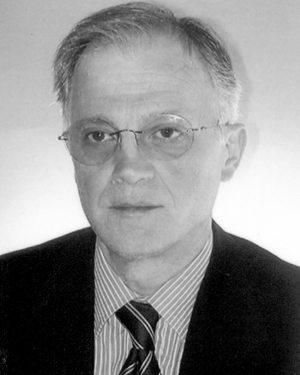
Dipartimento di Ingegneria Industriale e dell'Informazione, Seconda Università degli Studi di Napoli, Aversa, CE, Italy
Antonio Buonomo (M'83) was born in Cardito, Napoli, Italy, in 1949. He received the Laurea degree in electronic engineering from the Università di Napoli, Naples, Italy, in 1975.
In 1976, he was appointed Assistant Professor of Electronics at the Università della Calabria, Cosenza, Italy, where he held the position of Associate Professor of Applied Electronics and, from 1984 to 1985, was the Head of the Dipartimento Elettr...Show More
Antonio Buonomo (M'83) was born in Cardito, Napoli, Italy, in 1949. He received the Laurea degree in electronic engineering from the Università di Napoli, Naples, Italy, in 1975.
In 1976, he was appointed Assistant Professor of Electronics at the Università della Calabria, Cosenza, Italy, where he held the position of Associate Professor of Applied Electronics and, from 1984 to 1985, was the Head of the Dipartimento Elettr...View more
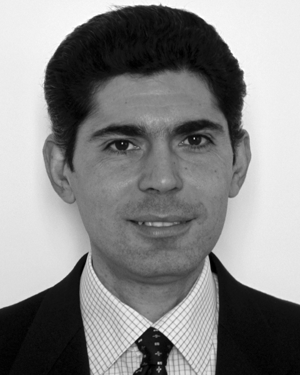
Dipartimento di Ingegneria Industriale e dell'Informazione, Seconda Università degli Studi di Napoli, Aversa, CE, Italy
Alessandro Lo Schiavo (M'99) was born in Naples, Italy, in 1972. He received the Laurea degree in electronic engineering from the Università di Napoli, Naples, Italy, in 1997, and the Ph.D. degree from the Seconda Università di Napoli, Naples, Italy, in 2000.
He has been an Assistant Professor at the Dipartimento di Ingegneria dell'Informazione, Seconda Università di Napoli, since 2001, where he teaches design of electroni...Show More
Alessandro Lo Schiavo (M'99) was born in Naples, Italy, in 1972. He received the Laurea degree in electronic engineering from the Università di Napoli, Naples, Italy, in 1997, and the Ph.D. degree from the Seconda Università di Napoli, Naples, Italy, in 2000.
He has been an Assistant Professor at the Dipartimento di Ingegneria dell'Informazione, Seconda Università di Napoli, since 2001, where he teaches design of electroni...View more
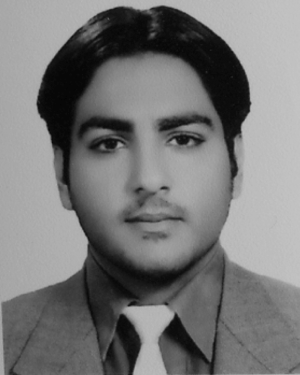
Department of Electrical Engineering, Linkoping University, Linkoping, Sweden
M. Asfandyar Awan received the master's degree in electrical engineering (System-On-Chip) (first class hons) from Linkoping University Sweden in 2011, and the bachelor's degree (first class hons) in electronics engineering from COMSATS Institute of Information Technology, Abbottabad, Pakistan, in 2009.
He has been working in Tyndall National Institute, Cork, Ireland, as a Research Intern since April 2012.
M. Asfandyar Awan received the master's degree in electrical engineering (System-On-Chip) (first class hons) from Linkoping University Sweden in 2011, and the bachelor's degree (first class hons) in electronics engineering from COMSATS Institute of Information Technology, Abbottabad, Pakistan, in 2009.
He has been working in Tyndall National Institute, Cork, Ireland, as a Research Intern since April 2012.View more
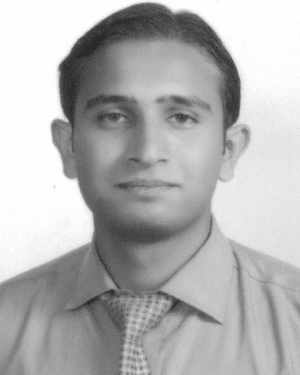
Department of Electrical Engineering, Linkoping University, Linkoping, Sweden
Malik Summair Asghar received the B.S. degree in electronics engineering from COMSATS Institute of Information technology, Abbottabad, Pakistan, in 2009. He received M.S. degree in electrical engineering with specialization in communication electronics from Linkoping University, Linkoping, Sweden, in 2013.
He is currently working as a research assistant in theory modelling and design group at Tyndall National Institute, Co...Show More
Malik Summair Asghar received the B.S. degree in electronics engineering from COMSATS Institute of Information technology, Abbottabad, Pakistan, in 2009. He received M.S. degree in electrical engineering with specialization in communication electronics from Linkoping University, Linkoping, Sweden, in 2013.
He is currently working as a research assistant in theory modelling and design group at Tyndall National Institute, Co...View more
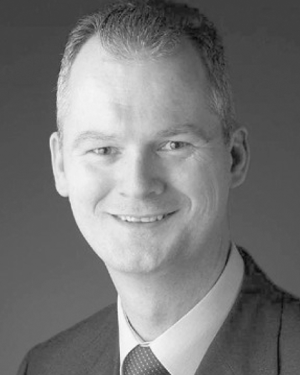
Department of Microelectronic Engineering, Tyndall National Institute, Cork, Ireland
Michael Peter Kennedy (S'84–M'91–SM'95–F'98) received the B.E. degree in electronics from the National University of Ireland, Dublin, Ireland, in 1984, the M.S. and Ph.D. degrees from the University of California (UC Berkeley), Berkeley, CA, USA, in 1987 and 1991, respectively, and the D.Eng. degree from the National University of Ireland, Cork, Ireland, in 2010.
He was a Design Engineer with Philips Electronics; a Post-Do...Show More
Michael Peter Kennedy (S'84–M'91–SM'95–F'98) received the B.E. degree in electronics from the National University of Ireland, Dublin, Ireland, in 1984, the M.S. and Ph.D. degrees from the University of California (UC Berkeley), Berkeley, CA, USA, in 1987 and 1991, respectively, and the D.Eng. degree from the National University of Ireland, Cork, Ireland, in 2010.
He was a Design Engineer with Philips Electronics; a Post-Do...View more

Dipartimento di Ingegneria Industriale e dell'Informazione, Seconda Università degli Studi di Napoli, Aversa, CE, Italy
Antonio Buonomo (M'83) was born in Cardito, Napoli, Italy, in 1949. He received the Laurea degree in electronic engineering from the Università di Napoli, Naples, Italy, in 1975.
In 1976, he was appointed Assistant Professor of Electronics at the Università della Calabria, Cosenza, Italy, where he held the position of Associate Professor of Applied Electronics and, from 1984 to 1985, was the Head of the Dipartimento Elettrico. In 1985, he was appointed Associate Professor of microelectronics at the Università di Salerno, Salerno, where he taught analog and digital electronics and circuit theory. In 1998, he joined the Dipartimento di Ingegneria dell'Informazione, Seconda Università di Napoli, where he is a Full Professor of Electronics, and Chairman of the Board of Electronics and of Computer Science, since 1999. His previous research interests have focused on issues in the area of semiconductor devices, process modelling, and analysis and design of analog circuits. His current research interests are focused on nonlinear circuit theory and circuit simulation.
Antonio Buonomo (M'83) was born in Cardito, Napoli, Italy, in 1949. He received the Laurea degree in electronic engineering from the Università di Napoli, Naples, Italy, in 1975.
In 1976, he was appointed Assistant Professor of Electronics at the Università della Calabria, Cosenza, Italy, where he held the position of Associate Professor of Applied Electronics and, from 1984 to 1985, was the Head of the Dipartimento Elettrico. In 1985, he was appointed Associate Professor of microelectronics at the Università di Salerno, Salerno, where he taught analog and digital electronics and circuit theory. In 1998, he joined the Dipartimento di Ingegneria dell'Informazione, Seconda Università di Napoli, where he is a Full Professor of Electronics, and Chairman of the Board of Electronics and of Computer Science, since 1999. His previous research interests have focused on issues in the area of semiconductor devices, process modelling, and analysis and design of analog circuits. His current research interests are focused on nonlinear circuit theory and circuit simulation.View more

Dipartimento di Ingegneria Industriale e dell'Informazione, Seconda Università degli Studi di Napoli, Aversa, CE, Italy
Alessandro Lo Schiavo (M'99) was born in Naples, Italy, in 1972. He received the Laurea degree in electronic engineering from the Università di Napoli, Naples, Italy, in 1997, and the Ph.D. degree from the Seconda Università di Napoli, Naples, Italy, in 2000.
He has been an Assistant Professor at the Dipartimento di Ingegneria dell'Informazione, Seconda Università di Napoli, since 2001, where he teaches design of electronic circuits and electronics for communications. His current research interests are in the areas of analysis and design of analog circuits, nonlinear circuit theory, and circuit simulation.
Alessandro Lo Schiavo (M'99) was born in Naples, Italy, in 1972. He received the Laurea degree in electronic engineering from the Università di Napoli, Naples, Italy, in 1997, and the Ph.D. degree from the Seconda Università di Napoli, Naples, Italy, in 2000.
He has been an Assistant Professor at the Dipartimento di Ingegneria dell'Informazione, Seconda Università di Napoli, since 2001, where he teaches design of electronic circuits and electronics for communications. His current research interests are in the areas of analysis and design of analog circuits, nonlinear circuit theory, and circuit simulation.View more

Department of Electrical Engineering, Linkoping University, Linkoping, Sweden
M. Asfandyar Awan received the master's degree in electrical engineering (System-On-Chip) (first class hons) from Linkoping University Sweden in 2011, and the bachelor's degree (first class hons) in electronics engineering from COMSATS Institute of Information Technology, Abbottabad, Pakistan, in 2009.
He has been working in Tyndall National Institute, Cork, Ireland, as a Research Intern since April 2012.
M. Asfandyar Awan received the master's degree in electrical engineering (System-On-Chip) (first class hons) from Linkoping University Sweden in 2011, and the bachelor's degree (first class hons) in electronics engineering from COMSATS Institute of Information Technology, Abbottabad, Pakistan, in 2009.
He has been working in Tyndall National Institute, Cork, Ireland, as a Research Intern since April 2012.View more

Department of Electrical Engineering, Linkoping University, Linkoping, Sweden
Malik Summair Asghar received the B.S. degree in electronics engineering from COMSATS Institute of Information technology, Abbottabad, Pakistan, in 2009. He received M.S. degree in electrical engineering with specialization in communication electronics from Linkoping University, Linkoping, Sweden, in 2013.
He is currently working as a research assistant in theory modelling and design group at Tyndall National Institute, Cork, Ireland. His research interests are in the areas of modelling, simulation and design of injection locked frequency dividers. He is currently working on the monolithic implementation of the injection locked frequency dividers in deep submicron technology.
Malik Summair Asghar received the B.S. degree in electronics engineering from COMSATS Institute of Information technology, Abbottabad, Pakistan, in 2009. He received M.S. degree in electrical engineering with specialization in communication electronics from Linkoping University, Linkoping, Sweden, in 2013.
He is currently working as a research assistant in theory modelling and design group at Tyndall National Institute, Cork, Ireland. His research interests are in the areas of modelling, simulation and design of injection locked frequency dividers. He is currently working on the monolithic implementation of the injection locked frequency dividers in deep submicron technology.View more

Department of Microelectronic Engineering, Tyndall National Institute, Cork, Ireland
Michael Peter Kennedy (S'84–M'91–SM'95–F'98) received the B.E. degree in electronics from the National University of Ireland, Dublin, Ireland, in 1984, the M.S. and Ph.D. degrees from the University of California (UC Berkeley), Berkeley, CA, USA, in 1987 and 1991, respectively, and the D.Eng. degree from the National University of Ireland, Cork, Ireland, in 2010.
He was a Design Engineer with Philips Electronics; a Post-Doctoral Research Engineer with the Electronics Research Laboratory, UC Berkeley; and a Professeur Invité with Federal Institute of Technology Lausanne (EPFL), Lausanne, Switzerland. From 1992 to 2000, he was with the faculty of the Department of Electronic and Electrical Engineering, University College Dublin, Dublin, where he taught electronic circuits and computer-aided circuit analysis, and directed the undergraduate Electronics Laboratory. In 2000, he joined the University College Cork (UCC), Cork, Ireland, as a Professor and Head of the Department of Microelectronic Engineering. He was elected Dean of the Faculty of Engineering, UCC, in 2003 and served as Vice-President for Research Policy and Support from 2005 through 2010. He has authored more than 300 papers in the area of nonlinear circuits and taught courses on nonlinear dynamics and chaos in U.K., Switzerland, Italy, and Hungary. He is the holder of four patents. His research interests are the simulation, design, and analysis of nonlinear dynamical systems for applications in communications and signal processing.
Dr. Kennedy has been a member of the Royal Irish Academy since 2004. He served as an Associate Editor for the IEEE Transactions on Circuits and Systems—I: Regular Papers from 1993 to 1995 and from 1999 to 2004. He was the recipient of the 1991 Best Paper Award from the International Journal of Circuit Theory and Applications, the Best Paper Award at the European Conference on Circuit Theory and Design 1999, the IEEE Third Millenium Medal, the IEEE Circuits and Systems Society Golden Jubilee Medal in 2000, and the inaugural Parsons Medal for Engineering Sciences of the Royal Irish Academy in 2001.
Michael Peter Kennedy (S'84–M'91–SM'95–F'98) received the B.E. degree in electronics from the National University of Ireland, Dublin, Ireland, in 1984, the M.S. and Ph.D. degrees from the University of California (UC Berkeley), Berkeley, CA, USA, in 1987 and 1991, respectively, and the D.Eng. degree from the National University of Ireland, Cork, Ireland, in 2010.
He was a Design Engineer with Philips Electronics; a Post-Doctoral Research Engineer with the Electronics Research Laboratory, UC Berkeley; and a Professeur Invité with Federal Institute of Technology Lausanne (EPFL), Lausanne, Switzerland. From 1992 to 2000, he was with the faculty of the Department of Electronic and Electrical Engineering, University College Dublin, Dublin, where he taught electronic circuits and computer-aided circuit analysis, and directed the undergraduate Electronics Laboratory. In 2000, he joined the University College Cork (UCC), Cork, Ireland, as a Professor and Head of the Department of Microelectronic Engineering. He was elected Dean of the Faculty of Engineering, UCC, in 2003 and served as Vice-President for Research Policy and Support from 2005 through 2010. He has authored more than 300 papers in the area of nonlinear circuits and taught courses on nonlinear dynamics and chaos in U.K., Switzerland, Italy, and Hungary. He is the holder of four patents. His research interests are the simulation, design, and analysis of nonlinear dynamical systems for applications in communications and signal processing.
Dr. Kennedy has been a member of the Royal Irish Academy since 2004. He served as an Associate Editor for the IEEE Transactions on Circuits and Systems—I: Regular Papers from 1993 to 1995 and from 1999 to 2004. He was the recipient of the 1991 Best Paper Award from the International Journal of Circuit Theory and Applications, the Best Paper Award at the European Conference on Circuit Theory and Design 1999, the IEEE Third Millenium Medal, the IEEE Circuits and Systems Society Golden Jubilee Medal in 2000, and the inaugural Parsons Medal for Engineering Sciences of the Royal Irish Academy in 2001.View more


